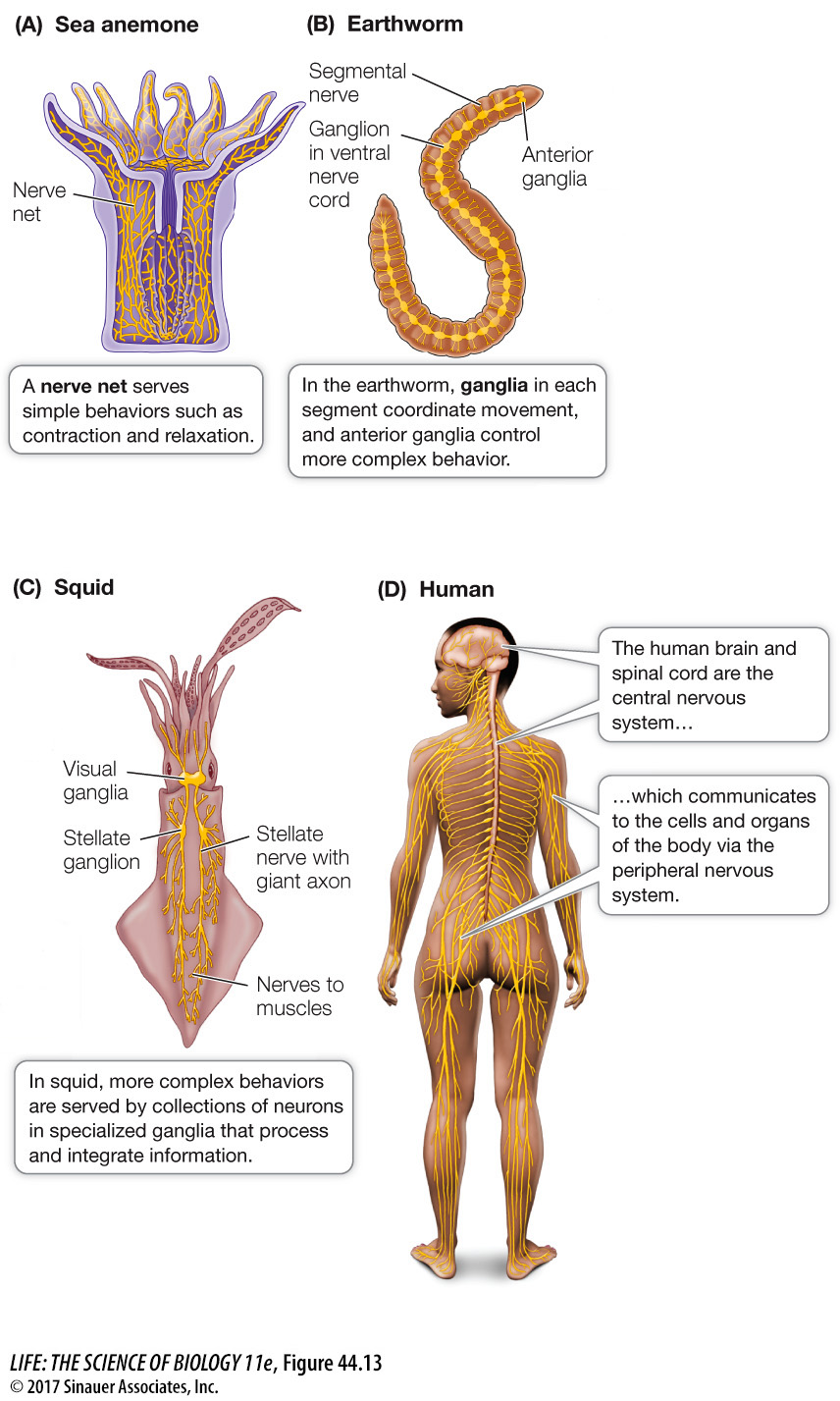Nervous systems range in complexity
Simple animals such as cnidarians (sea anemones, for example) process information with a limited number of simple neural networks that do little more than provide direct lines of communication from sensory cells to effectors; there is little or no integration or processing of signals (Figure 44.13A). The cnidarian’s nerve net is most developed around the tentacles and the oral opening, where it facilitates detection of food or danger and causes tentacles to extend or retract.

Animals that are more complex and move about in search of food and mates must process and integrate larger amounts of information. Even earthworms fit this description, and their increased need for information processing is met by higher numbers of neurons organized into clusters of neuronal cell bodies called ganglia (singular ganglion). Ganglia serving different functions may be distributed around the body, as in earthworms (Figure 44.13B). In animals that are bilaterally symmetrical, ganglia frequently come in pairs, one on each side of the body (Figure 44.13C). Also, as animals increase in complexity, some ganglia may become enlarged or fused together at the anterior end, forming a brain. Small nervous systems of invertebrates can be remarkably complex. Consider the nervous systems of spiders that have programmed within them the thousands of precise movements necessary to construct an intricate web without prior experience or opportunities to learn the specific web architecture of their species.
In vertebrates, most cells of the nervous system are found in the central nervous system (CNS). The CNS includes the brain and the spinal cord, which are the sites of most information processing, storage, and retrieval (Figure 44.13D). Information is transmitted from sensory cells to the CNS and from the CNS to cells that respond (effectors) via neurons that extend or reside outside the brain and the spinal cord. These sensory and effector neurons and their supporting cells are the peripheral nervous system.